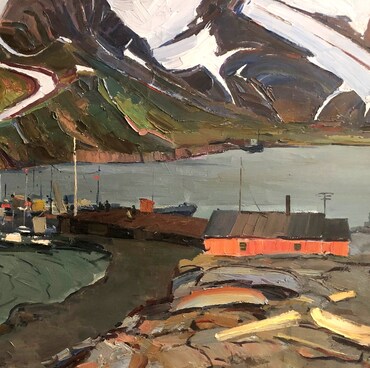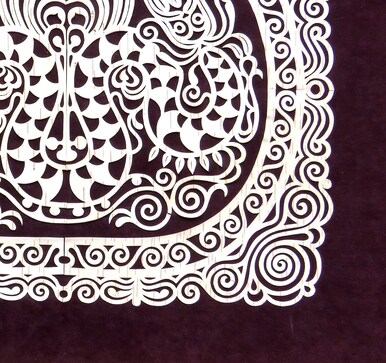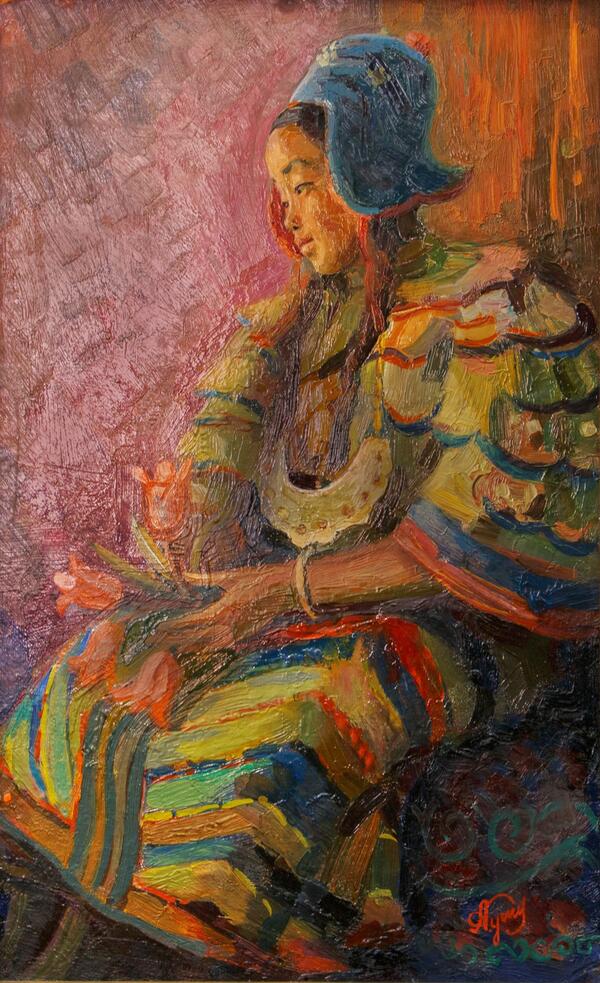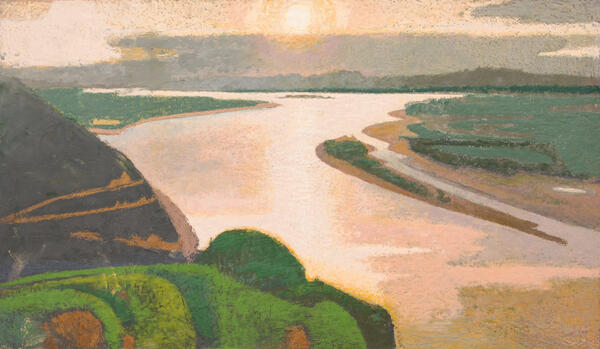Dmitry Andreyevich Gutov (1927–1999) was born in the village of Travnoye in the Novosibirsk region. He was a graduate of the Kyiv Art Institute, a member of the Artists’ Union of the USSR and one of the founders of Russian Far Eastern art.
Gutov was one of the first artists who lived and worked in Komsomolsk-on-Amur, and he left a rich artistic legacy, including oil paintings, graphics, narrative and philosophical paintings, still lifes, portraits of contemporaries and numerous landscapes. But the most outstanding thing about Gutov is that he was the only painter from the Russian Far East who learned the ancient art of encaustic painting from books by himself, invented his own technology of making encaustic paints and crayons and created a lot of works in this technique.
The technology of making and using these specific paints is complex and time-consuming. Colored pigments mixed with wax, oil, and resin are heated and then applied to the canvas; then they are dried and fixed with an open fire. It took the artist over ten years to finally revive the almost-lost technique.
The landscape “Autumn Flame” was also created with encaustic paints. Dmitry Gutov always emphasized the importance of color and its indispensability in expressing the content of the work, so he meticulously searched for color transitions and combinations that glued the elements of the picture together. The colors chosen for “Autumn Flame” are distinguished by their purity, saturation, vividness, and the glow effect. They helped the artist to convey the strength and vastness of autumn nature and fill the canvas with an energy of its own.
For Dmitry Gutov, encaustic painting held not only artistic but also metaphysical value. With his manner of “sculpting” the image and trying to add more volume and movement to the depicted objects, the artist displayed interest in the philosophical side of creativity, the embodiment of the world’s beauty, and the search for new things to learn.
A certain evasiveness, so typical for Gutov’s works, invites the viewers to their own interpretation of the image, merging the artist’s concept and their inner thoughts.
Gutov was one of the first artists who lived and worked in Komsomolsk-on-Amur, and he left a rich artistic legacy, including oil paintings, graphics, narrative and philosophical paintings, still lifes, portraits of contemporaries and numerous landscapes. But the most outstanding thing about Gutov is that he was the only painter from the Russian Far East who learned the ancient art of encaustic painting from books by himself, invented his own technology of making encaustic paints and crayons and created a lot of works in this technique.
The technology of making and using these specific paints is complex and time-consuming. Colored pigments mixed with wax, oil, and resin are heated and then applied to the canvas; then they are dried and fixed with an open fire. It took the artist over ten years to finally revive the almost-lost technique.
The landscape “Autumn Flame” was also created with encaustic paints. Dmitry Gutov always emphasized the importance of color and its indispensability in expressing the content of the work, so he meticulously searched for color transitions and combinations that glued the elements of the picture together. The colors chosen for “Autumn Flame” are distinguished by their purity, saturation, vividness, and the glow effect. They helped the artist to convey the strength and vastness of autumn nature and fill the canvas with an energy of its own.
For Dmitry Gutov, encaustic painting held not only artistic but also metaphysical value. With his manner of “sculpting” the image and trying to add more volume and movement to the depicted objects, the artist displayed interest in the philosophical side of creativity, the embodiment of the world’s beauty, and the search for new things to learn.
A certain evasiveness, so typical for Gutov’s works, invites the viewers to their own interpretation of the image, merging the artist’s concept and their inner thoughts.




